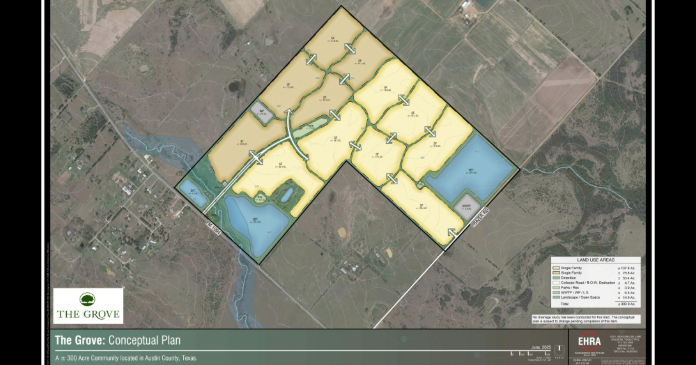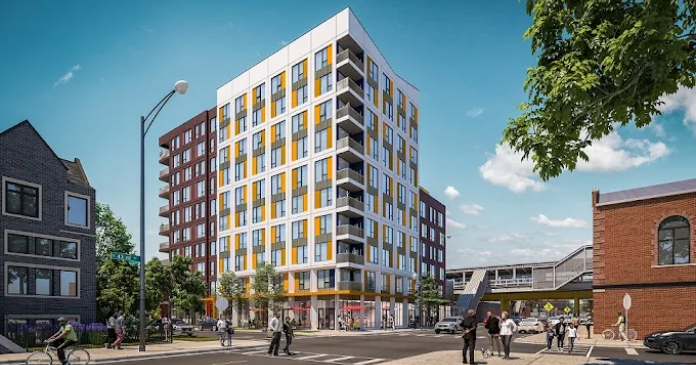The Internet continues to penetrate the infrastructure of multihousing business by changing the way Americans search for a place to live, according to a recent study by Pew Research. More than a quarter of all adults in the U.S. have searched online for housing, double the overall number of those who had done so in 2000.
Last year the numbers rose even higher within the 18 to 20 years old demographic — more than half looked for their next place to live online. This compares with 43 percent of Internet users 30-to-49 years old; 27 percent ages 50 to 64; and 15 percent of Internet users ages 65 and older.
On a typical day, 9 percent of online Americans ages 18 to 29 were said to have looked for housing, more than double the percentage in this age group just two years earlier. This may be a reflection of their transient stage of life as well as their typically intensive use of the Internet.
Who is more likely to search for an apartment online? Youth is a stronger predictor than connection speed or years of online experience.
And today, searching online for a place to live likely includes a virtual tour. Over half of all Internet users have taken a virtual tour online, up from 45 percent just six months prior. This translates to nearly 72 million people.
Virtual tours allow users to view a place without having to physically travel there. With the quality and accessibility of virtual tours improving and broadband penetration rising, users are increasingly turning to the Internet to preview a location before making a physical visit. This also allows the prospect to make more informed plans and selections without leaving the computer.
Instead of setting up an on-site visit with a leasing consultant, potential renters are now doing the legwork in cyberspace in greater numbers. Sitting in front of a computer while clicking and dragging the mouse, today’s virtual tours allow users to take in 360-degree views of floor plans and inspect rooms from corner to corner and floor to ceiling, often with descriptive text or audio accompanying the tour.
Certain groups of Internet users are more likely to take virtual tours: those ages 30-49, college graduates, those with higher household income, those living in non-rural areas, those with more online experience, and those with broadband access.
The leading age group that has taken the most virtual tours? 30-49, compared with 47 percent of those ages 18-29 and 29 percent of those ages 65 and older. Sixty-one percent of college graduates have taken virtual tours, compared with 41 percent of high school graduates. Those with household income of $50,000 or higher are also more likely to have ventured somewhere online than those with lower household income.
Developing a Website for today’s multihousing industry
Understanding the commercial value and potential impact of a corporate Website and how it relates to leasing or selling multifamily is only an entry point, but critical. While a number of today’s most sophisticated sites also include a wide bag of tricks from fully integrated resident portals, online communities and Intranets for ubiquitous property management, there are still many more that fall into the vast sea of unsearchable noise that is the Web. As realtors are fond of saying, “If I can’t see it, I can’t sell it,” which might apply to poor search-ability as well as the overgrown shrubs in the front yard.
An owner or operator’s entire Website can become a non-starter if any single part of the process is omitted or misses the mark such as a Website that links to an Internet Lead Service (ILS) for its content, (if its Rent.com, you’re paying $350 each time a lead touches that site and leases) or one that never responds to prospects who make online inquiry. In fact, as the adage goes, it’s easier to make a new impression than it is to undo a poor one.
Even the way various demographic populations use the Internet to find a home is changing and evolving with the technology.
Is your target market likely to look for your community on the Web? As studies show, there are key indicators from age to income to education that determine the likliness of who’s looking for a new place via the Internet versus traditional venues such as drive-by or print media. The first step might be to match your community demographics against those with a propensity to search online. It’s simply the law of averages laid against your community demographic.
Otherwise, there is no statistically clear cut answer except for a community’s own individual tracking and traffic analysis. With the wide diversity of markets and product across the country, from high barrier urban to the most isolated rural markets, most communities will likely experience success from a hybrid of promotional tools that most certainly include the Internet.
Yet, there are interesting trends afoot.
College-age prospects are a clear and leading indicator, not only for their likeliness to search out their next apartment online, but to even go as far as submitting an application, make a deposit and virtually lease an apartment online, all without ever stepping foot on the property prior to the day of move-in.
And while it’s true that market conditions have created a vacuum whereby the lack of student housing has reached crisis proportions, it has also presented a compelling glimpse into the not-so-distant future of apartment leasing and the Internet. Student housing is experiencing a strong shift to the Internet that affects not only the way apartments are leased, but the way they are operating.
The day that communities are marketed and leased entirely online may be down the road, but the trend toward a smarter, more educated prospect walking through the leasing office door has statistically arrived.
As such, Websites don’t build themselves, and complicating the process is the wide range of options and pricing. Gauging the net impact of a community Website is a challenge, and if it doesn’t bring in the desired response, it could theoretically be the result of any number of things from the site’s lack of search-ability to poor design.
There are a handful of companies within the multihousing industry that specialize in Websites designed specifically to market and lease apartments. Within the last 30 days, two newcomers have been added to the field: MyNewSite, an offshoot of the Internet Lead Service MyNewPlace, and DIY RE Solutions, a site launched last year for small, independent rental owners.
Both came into the market with product most suited for portfolios beginning at twenty or so units. “We were surprised,” said John Helm, president of MyNewSite. “It’s such an easy and cost-efficient product that we’ve actually landed some pretty sizable portfolios. We weren’t expecting companies like The Lane Company.”
MyNewSite is the second initiative by Helm. His first, MyNewPlace, is a pay-for-performance site launched last year.
DIY RE Solutions out of Cleveland, Ohio, an online management portal launched last year has recently added Website design as well. The company is an endeavor by Russ Sandlin and Steve Lloyd, who left MRI to create the site specifically for the small, independent rental owners.
“The Website component is completely built and promoted by the owner,” said Russ Sandlin. “Our first day of operation, we had an owner with a portfolio of 25 units log on to build one of the first sites. He called me to let me know he had completed the entire Website in a couple hours. He was beaming.”
While two companies were being added to the field, ResiteIT headquartered in Indiana, was purchased by Dominium Enterprises, parent company to ForRent Media Solutions. The terms of the sale were not disclosed, but the ReSite staff will remain with the business into the new ownership.
Spherexx.com, headquartered Tulsa, Okla. is a marketing and technology company built from the framework of the multihousing industry. “Our team has over 50 years of experience in the property management industry and I personally have 18 years, so this gives us tremendous insight into the solutions we build for each client,” said Becca Wilson, Spherexx.com president. “It requires a deep bench of graphic designers, database engineers, programmers, search engine specialists and Website developers to be a one-stop shop for our clients. Also, a continuing launch of products like GotNoVacancy.com, our leads management and follow-up tool that provides in depth performance tracking. It’s been well-received by our clients.” Spherexx.com parts from crowd in that it’s predominately a custom shop and is priced accordingly. As part and parcel to aligning with a company’s objectives, Spherexx.com offers over a dozen products and services along with Website design and integration, from brochures to Search Engine Optimization to 3D animated virtual tours. It’s customer-centered solutions thrive on understanding a client’s specific demographic market, and creating a home page that provides the highest impact and best first impression, states Wilson.
The “call to action” is central in Spherexx.com Websites and marketing materials. “We make certain the call to action is throughout every Website,” says Wilson. “It gives a prospect every opportunity to do business with you.”
If you’re interested in getting out the starting gate with no up- front costs, Property Solutions of Provo, Utah, may be your solution. “What sets us apart is there is no start up cost,” says President Ben Zimmer. “That, and ours is the only Website system in the multihousing industry that includes a proprietary online payment system. This means you can not only receive online applications, but also application fees and rent payments.”
Property Solutions can integrate with Vaultware’s unit availability and reservation component, as well as all other major software applications.
Ellipse, the oldest by a year, is based in Dallas, Texas. First, and foremost, the company is not on the sales block despite the rumor mill. “We own 10 percent of the U.S. market. We’d like to increase that to 30. To that end, we are repositioning our board of directors with the intention of strengthening our financial position,” said Lisa Benson, president of Ellipse.
Ellipse offers the only product that encompasses all operations and marketing components in conjunction with property management software. Ellipse Symphony is scheduled to be launched at the Texas Apartment Association’s annual meeting this year. “There are 9,000 labor hours in developing this software. The end result is eight components that truly moves a multifamily operation forward,” said Benson.
So, how important is a good Website design? In a report from Forrester Research titled, “The Best and Worst of Site Design,” the authors stated, “Most of the problems we found were self-inflicted wounds resulting from site managers who naively allow designers to: hide value, turn interfaces into dexterity tests, favor ‘white space’ over information, and leave users hanging.” The traps are subtle, but good design is a triumph over more than the pitfalls. Good design is the result of a process of deep thought. And therein lies the biggest benefit of good design: visitors to the site who are thinkers know that the designer is a thinker. They know that the designer was not acting out of ego, but of thinking of the needs of others.
Sites that exhibit good design — those that anticipate the needs of their visitors, prospects and patrons — are directly rewarded with ROI: return on investment.















